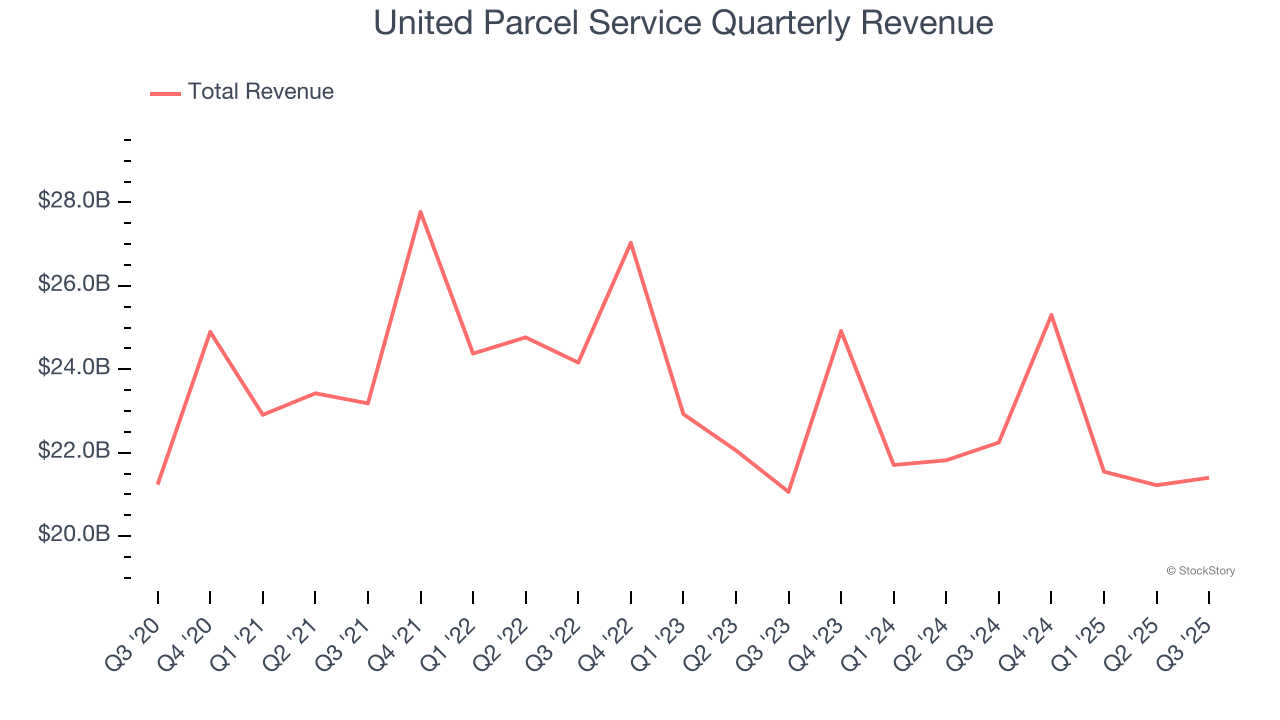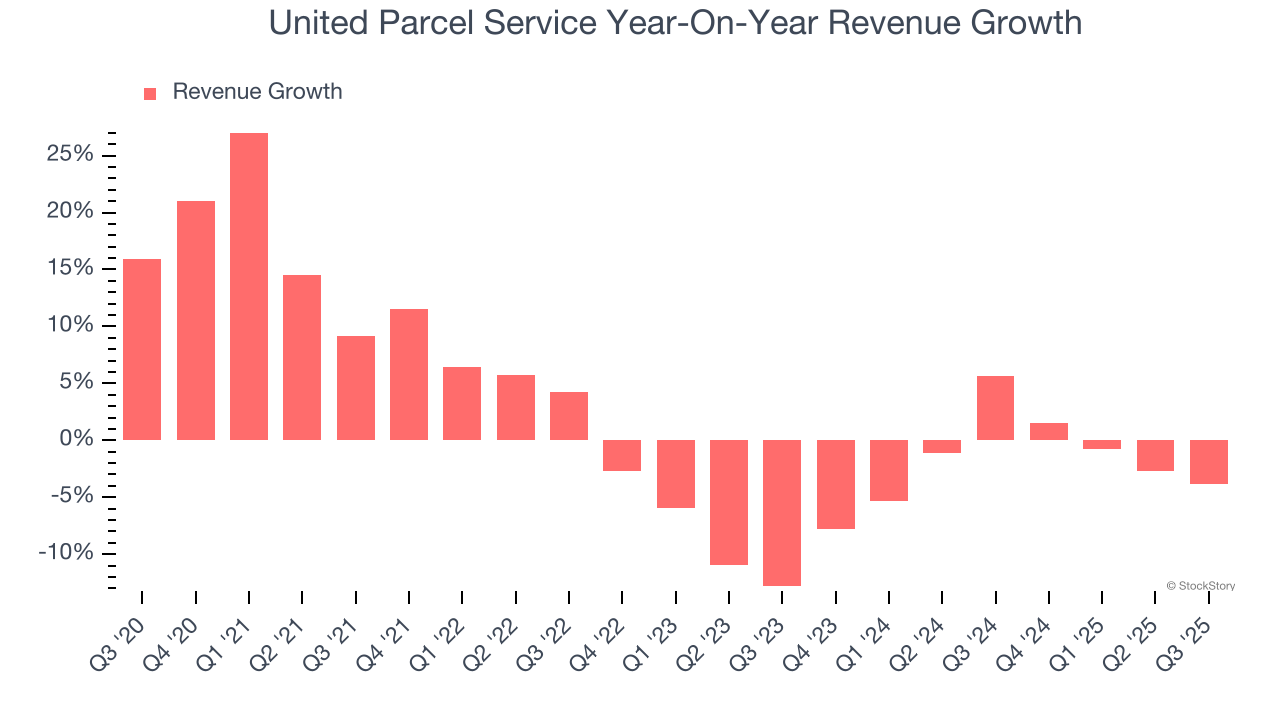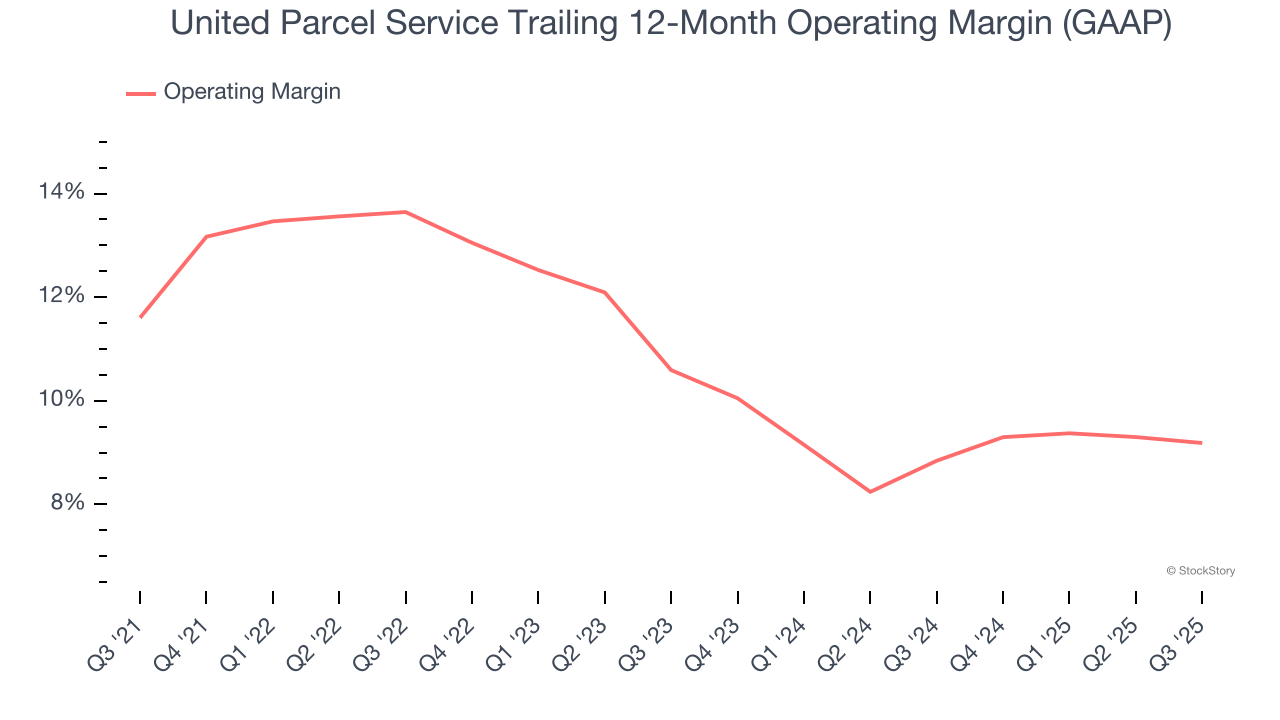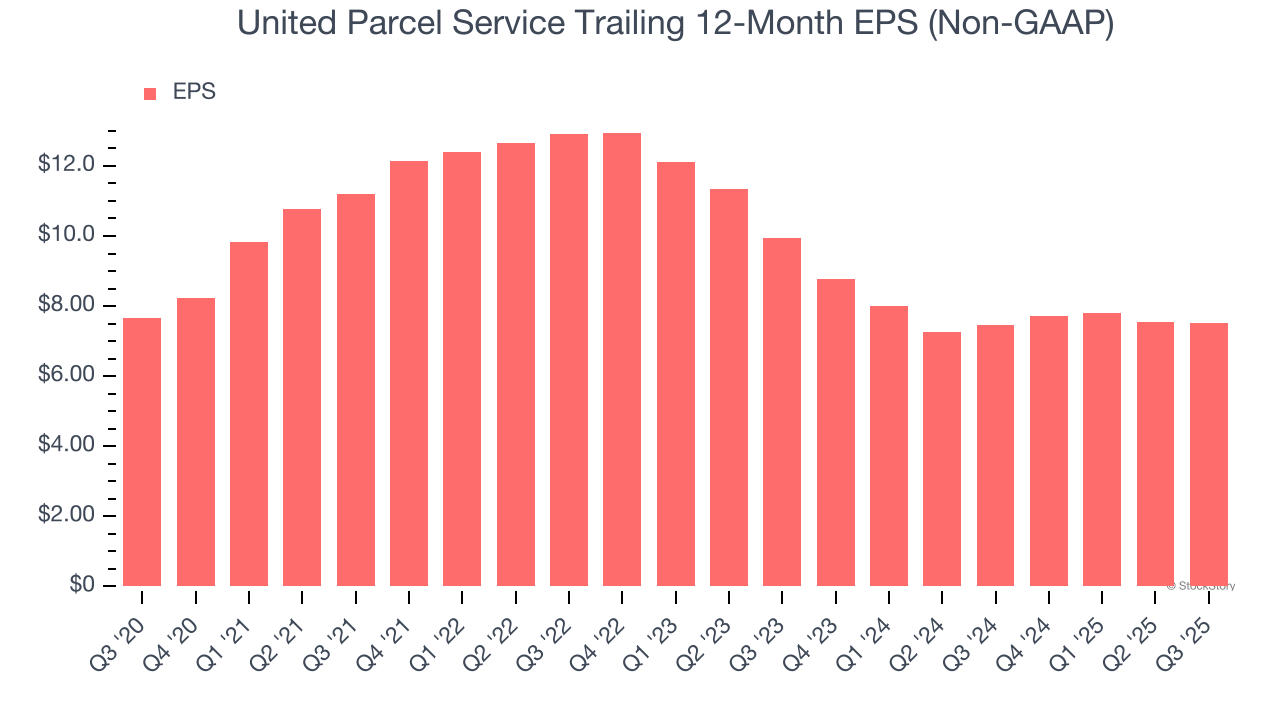
Parcel delivery company UPS (NYSE:UPS) reported Q3 CY2025 results beating Wall Street’s revenue expectations, but sales fell by 3.8% year on year to $21.4 billion. The company expects next quarter’s revenue to be around $24 billion, close to analysts’ estimates. Its non-GAAP profit of $1.74 per share was 33% above analysts’ consensus estimates.
Is now the time to buy United Parcel Service? Find out by accessing our full research report, it’s free for active Edge members.
United Parcel Service (UPS) Q3 CY2025 Highlights:
- Revenue: $21.4 billion vs analyst estimates of $20.89 billion (3.8% year-on-year decline, 2.4% beat)
- Adjusted EPS: $1.74 vs analyst estimates of $1.31 (33% beat)
- Revenue Guidance for Q4 CY2025 is $24 billion at the midpoint, roughly in line with what analysts were expecting
- Operating Margin: 8.4%, in line with the same quarter last year
- Market Capitalization: $75.62 billion
“I want to extend my gratitude to all UPSers for their dedication and steadfast commitment to serving our customers,” said Carol Tomé, UPS chief executive officer.
Company Overview
Trademarking its recognizable UPS Brown color, UPS (NYSE:UPS) offers package delivery, supply chain management, and freight forwarding services.
Revenue Growth
A company’s long-term sales performance can indicate its overall quality. Any business can experience short-term success, but top-performing ones enjoy sustained growth for years. Over the last five years, United Parcel Service grew its sales at a sluggish 2.2% compounded annual growth rate. This fell short of our benchmarks and is a tough starting point for our analysis.

We at StockStory place the most emphasis on long-term growth, but within industrials, a half-decade historical view may miss cycles, industry trends, or a company capitalizing on catalysts such as a new contract win or a successful product line. United Parcel Service’s performance shows it grew in the past but relinquished its gains over the last two years, as its revenue fell by 2% annually. United Parcel Service isn’t alone in its struggles as the Air Freight and Logistics industry experienced a cyclical downturn, with many similar businesses observing lower sales at this time. 
This quarter, United Parcel Service’s revenue fell by 3.8% year on year to $21.4 billion but beat Wall Street’s estimates by 2.4%. Company management is currently guiding for a 5.1% year-on-year decline in sales next quarter.
Looking further ahead, sell-side analysts expect revenue to decline by 2.4% over the next 12 months, similar to its two-year rate. This projection doesn't excite us and implies its newer products and services will not accelerate its top-line performance yet.
Today’s young investors won’t have read the timeless lessons in Gorilla Game: Picking Winners In High Technology because it was written more than 20 years ago when Microsoft and Apple were first establishing their supremacy. But if we apply the same principles, then enterprise software stocks leveraging their own generative AI capabilities may well be the Gorillas of the future. So, in that spirit, we are excited to present our Special Free Report on a profitable, fast-growing enterprise software stock that is already riding the automation wave and looking to catch the generative AI next.
Operating Margin
United Parcel Service has managed its cost base well over the last five years. It demonstrated solid profitability for an industrials business, producing an average operating margin of 10.8%. This result was particularly impressive because of its low gross margin, which is mostly a factor of what it sells and takes huge shifts to move meaningfully. Companies have more control over their operating margins, and it’s a show of well-managed operations if they’re high when gross margins are low.
Looking at the trend in its profitability, United Parcel Service’s operating margin decreased by 2.4 percentage points over the last five years. Many Air Freight and Logistics companies also saw their margins fall (along with revenue, as mentioned above) because the cycle turned in the wrong direction. We hope United Parcel Service can emerge from this a stronger company, as the silver lining of a downturn is that market share can be won and efficiencies found.

This quarter, United Parcel Service generated an operating margin profit margin of 8.4%, in line with the same quarter last year. This indicates the company’s cost structure has recently been stable.
Earnings Per Share
We track the long-term change in earnings per share (EPS) for the same reason as long-term revenue growth. Compared to revenue, however, EPS highlights whether a company’s growth is profitable.
United Parcel Service’s flat EPS over the last five years was below its 2.2% annualized revenue growth. This tells us the company became less profitable on a per-share basis as it expanded due to non-fundamental factors such as interest expenses and taxes.

Diving into the nuances of United Parcel Service’s earnings can give us a better understanding of its performance. As we mentioned earlier, United Parcel Service’s operating margin was flat this quarter but declined by 2.4 percentage points over the last five years. This was the most relevant factor (aside from the revenue impact) behind its lower earnings; interest expenses and taxes can also affect EPS but don’t tell us as much about a company’s fundamentals.
Like with revenue, we analyze EPS over a shorter period to see if we are missing a change in the business.
For United Parcel Service, its two-year annual EPS declines of 12.9% show its recent history was to blame for its underperformance over the last five years. These results were bad no matter how you slice the data.
In Q3, United Parcel Service reported adjusted EPS of $1.74, down from $1.76 in the same quarter last year. Despite falling year on year, this print easily cleared analysts’ estimates. Over the next 12 months, Wall Street expects United Parcel Service’s full-year EPS of $7.53 to shrink by 10.1%.
Key Takeaways from United Parcel Service’s Q3 Results
It was good to see United Parcel Service beat analysts’ revenue and EPS expectations this quarter. The company said it’s eliminated roughly 34,000 jobs from its workforce as part of its plan to turn around the business. Zooming out, we think this was a good print with some key areas of upside. The stock traded up 18% to $105.35 immediately following the results.
Sure, United Parcel Service had a solid quarter, but if we look at the bigger picture, is this stock a buy? The latest quarter does matter, but not nearly as much as longer-term fundamentals and valuation, when deciding if the stock is a buy. We cover that in our actionable full research report which you can read here, it’s free for active Edge members.
